ALICANTINE OLIGARCHY
Throughout the 18th and 19th centuries, there was an enormous development of commerce in Alicante, thanks to which a bourgeoisie emerged in the capital whose influence spread to nearby towns. This wealthy bourgeoisie began to enjoy the leisure that was visible in cafes, theaters, bullfights, public baths and in both religious and secular celebrations, where carnivals, literary contests and floral games stood out, mainly. This was intended to show the social stratum to which one belonged, rubbing shoulders with the wealthy classes of the capital, and seeking social recognition similar to that of the traditional nobility.
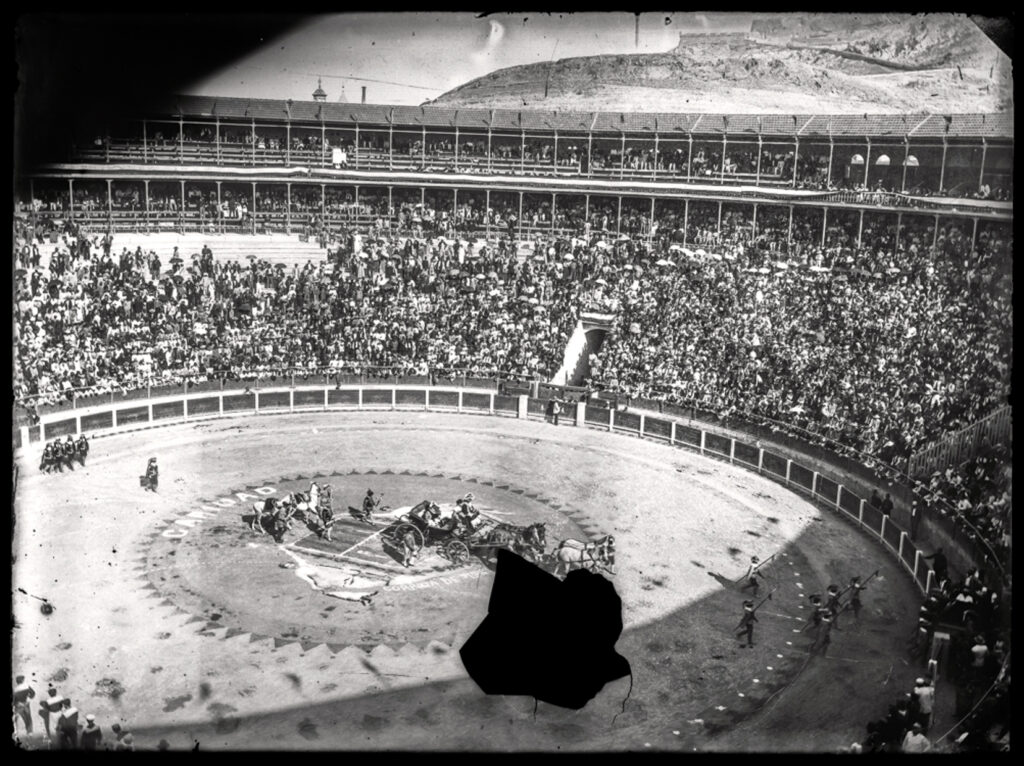
Alicante Bullring. End of the 19th century
It is from this moment that these wealthy classes began to buy the best properties in the Alicante Huerta, as signs of social distinction and wealth. Villas were acquired in the districts of Orgegia, La Condomina, Tángel, Santa Faz and in the municipalities of El Campello, Mutxamel and Sant Joan d’Alacant. These farms were not places where we only spent short periods of time, but were occupied from the months of April-May until September-October, and sometimes until the beginning of December. This activity was known among the local bourgeoisie as the summer.
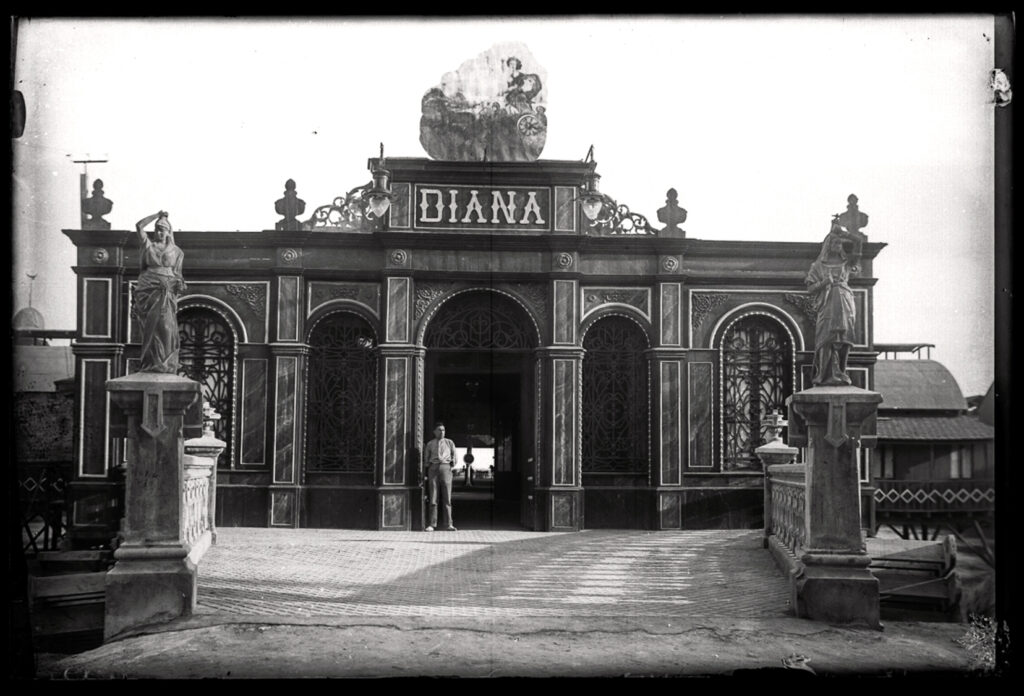
Diana Spa. End of the s. XIX, Postiguet beach (Alicante)
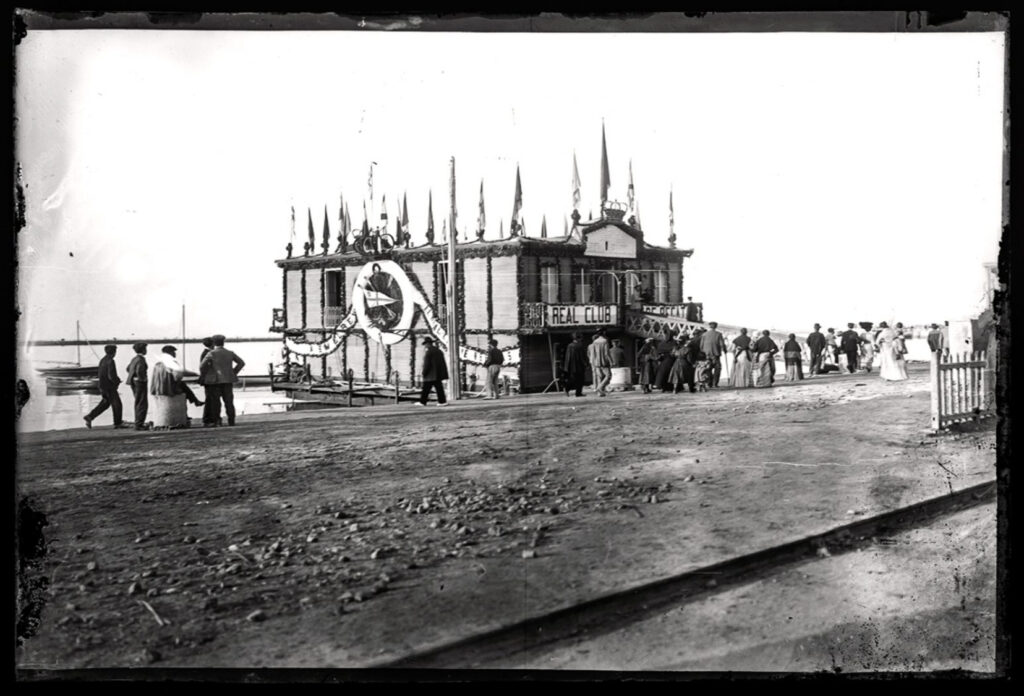
Royal Ragata Club of Alicante. Finals s. XIX, port of Alicante
Many of these private residences became fashionable as social gathering centers where coffee was drunk, gatherings, receptions and parties were organized, as well as some musical and theatrical shows. The events were held in the halls or in open spaces such as the gardens of the villas. Some estates had their own theaters, such as El Conde or La Paz de Sant Joan.
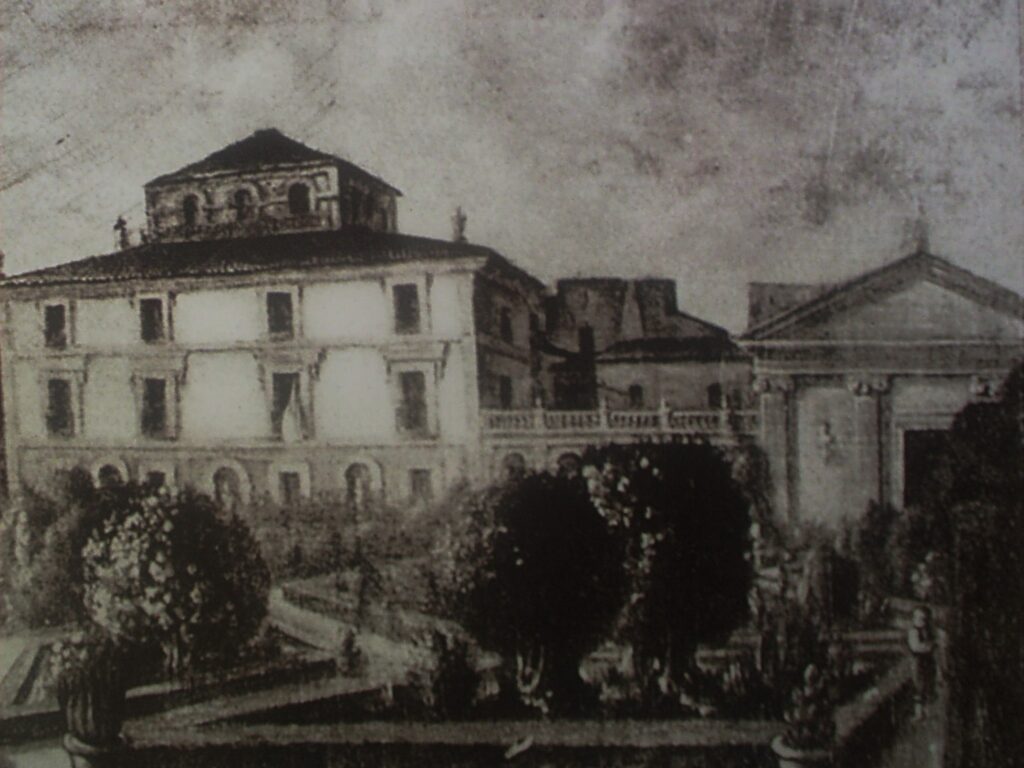
Engraving of Finca El del Conde or La Paz in whose gardens there was a theater (Sant Joan d’Alacant)
All of this attracted visits from important figures in society at the time. Highlights include Mr. Emilio Castelar, Mr. Benito Pérez Galdós and Mr. Isaac Peral. Likewise, the poet and civil governor of Alicante, Mr. Ramón de Campoamor y Campoosorio, resided with his wife Guillermina on the O’Gorman estate, now gone, where he wrote some of his most famous poems.
In the mid-19th century, the presence of nobles As the Count of Casa-Rojas, the Baron de Finestrat, the Marquis of Algorfa, the Count of Santa Clara and the Marquis of Ríoflorido, evidenced the prosperous economic activity of the capital, together with the commercial impulse that Huerta itself provided with its agricultural holdings, with the paradigmatic case of the wine production of Fondillón. .
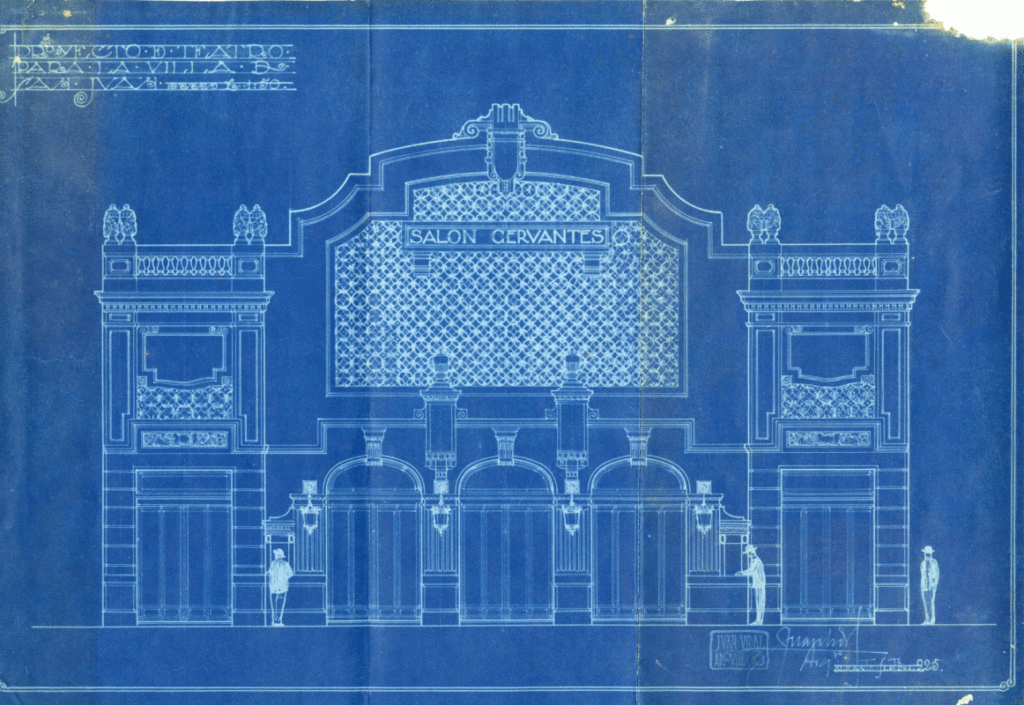
Cervantes theater façade section in Sant Joan d’Alacant. Project by Juan Vidal, 1925. AMSJA
